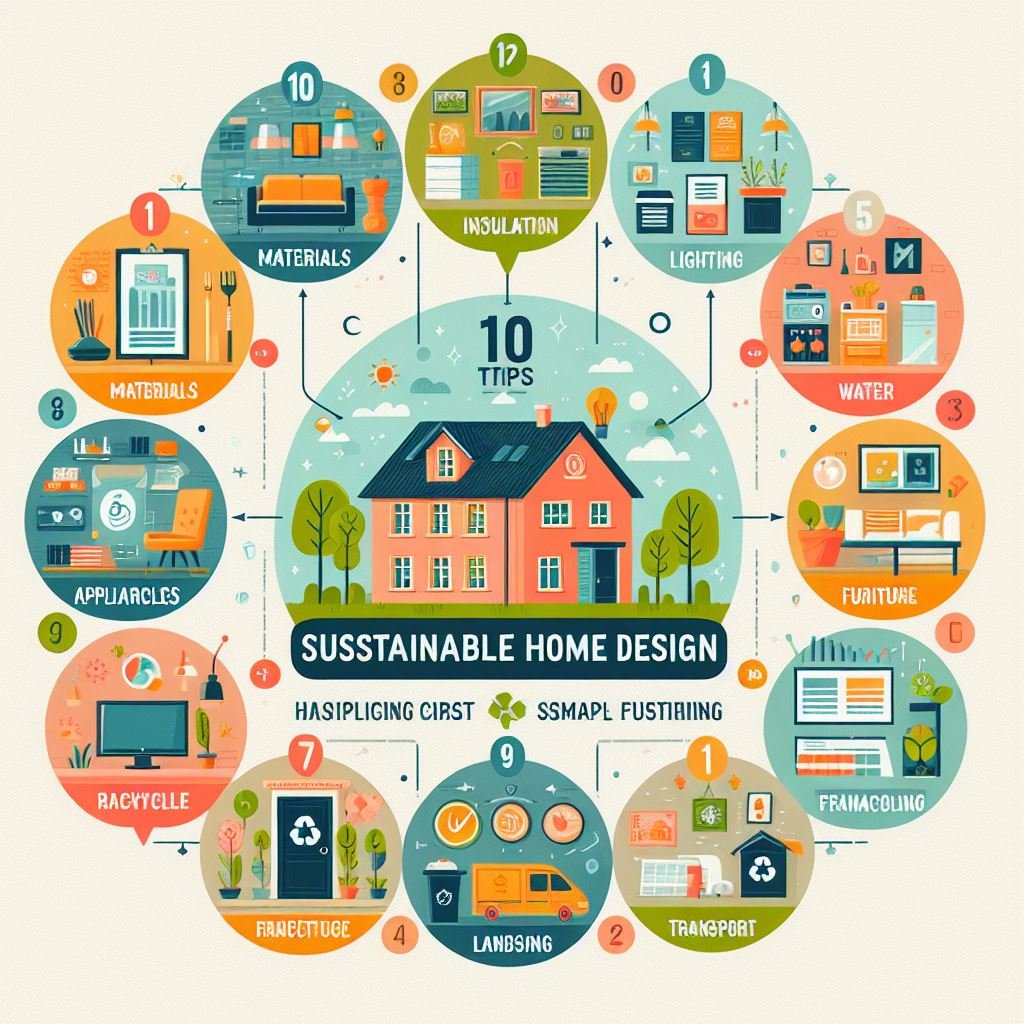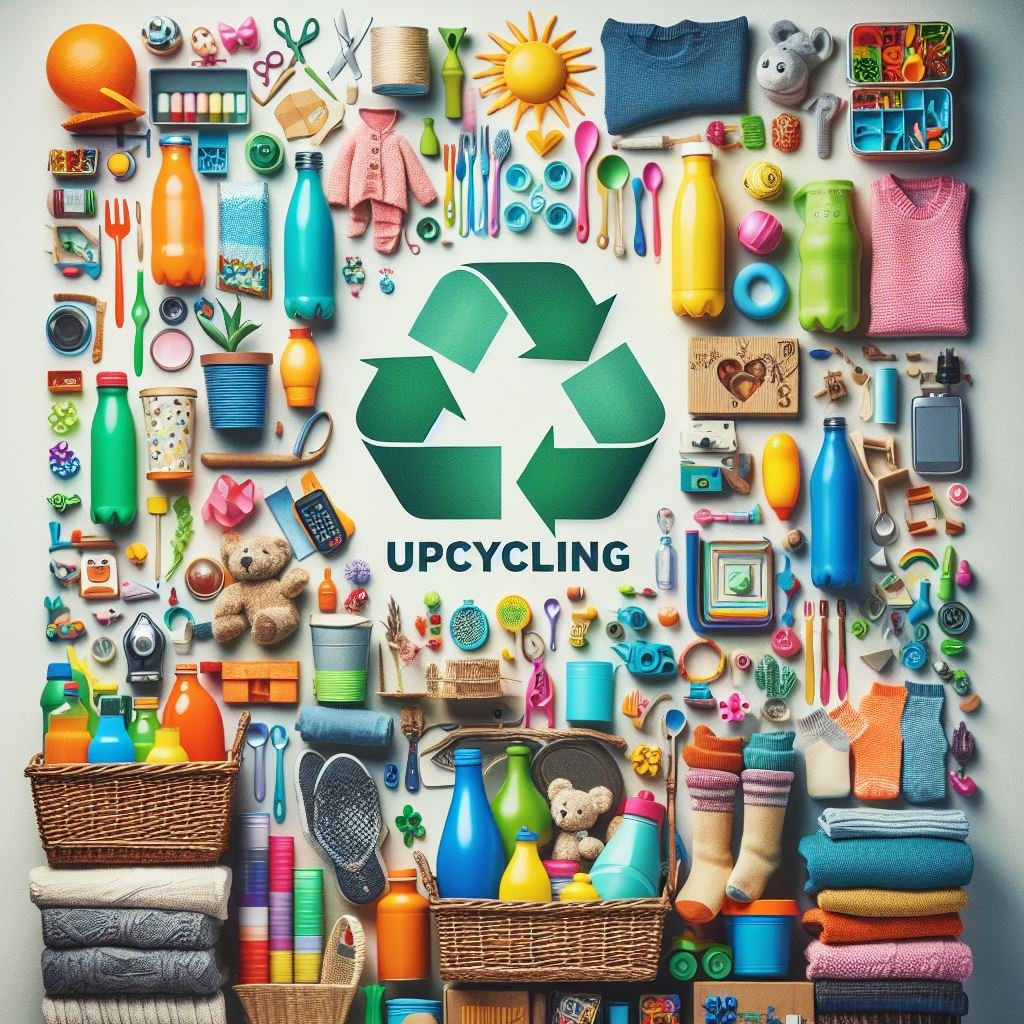
المقدمـة
Uncover the secret of a greener tomorrow
In the dynamic fabric of our world, the power of green holds the key to extraordinary transformation. Imagine a world in which individual choices become catalysts for an environmental renaissance, a secret waiting to be revealed.
A brief overview of environmental challenges
Amidst growing carbon footprints and environmental imbalances, the urgent need to adopt sustainable practices is more important than ever. Climate change, pollution, and resource depletion underscore the urgent need for a collective shift towards eco-friendly lifestyles. The difficult question arises: How can we, as individuals, reshape the future course of our planet?
The role of individuals in sustainable living
Here, the narrative shifts from despair to empowerment. The secret lies in the hands of every homeowner, parent, and eco-conscious individual. We are no longer passive observers but rather catalysts for change, influencing a sustainable revolution. The journey towards a greener tomorrow begins with understanding the pivotal role that individuals play in reshaping the environmental narrative.
By embarking on this endeavor, we expose not only the challenges but also the opportunities inherent in sustainable living. A palette of possibilities is unfolding before us, offering an opportunity to rewrite the narrative of our planet’s future. As we move through this exploration, it becomes abundantly clear that the power to transform our world lies in the choices we make every day. Welcome to a world where every decision, no matter how small, contributes to the symphony of sustainability. Get ready to unveil the secrets that could pave the way for a truly green and resilient tomorrow.
المحتويات
I. Understanding the eco-friendly lifestyle
III. Raising Eco-Conscious children
IV. Practical steps for everyday sustainability
V. Harnessing the power of renewable energy
VII. Navigate through eco-friendly certificates and labels
VIII. Psychological benefits of ecological living
9. الخاتمة
I. Understanding the eco-friendly lifestyle
A. The importance of eco-friendly practices
In the great tapestry of sustainable living, the importance of adopting eco-friendly practices cannot be overstated. These practices, which include conscious consumption and responsible choices, serve as the cornerstones of a renewed relationship with our planet. By adopting habits that reduce environmental damage, individuals become more effective in preserving our delicate ecosystems.
B. Defining sustainability in daily life
Sustainability is not just a buzzword; it is a guiding philosophy that shapes our daily choices. It requires finding a delicate balance – meeting our current needs without compromising the ability of future generations to meet their own. Imagine a lifestyle where resources are used wisely, waste is kept to a minimum, and the ecological footprint is just a whisper.
C. The multiplier effect: individual actions and global impact
And here’s the beauty of it: what may seem like small acts of environmental awareness resonate globally. One household reducing plastic use, choosing renewable energy, or adopting sustainable products sends ripples across industries and continents. The cumulative effect of individual choices is to reduce carbon emissions, reduce waste, and collectively move towards a sustainable, interconnected world.
By recognizing the importance of eco-friendly practices and defining sustainability in everyday life, we unleash the transformative potential of individual actions and realize their far-reaching consequences on a global scale.
II. Create an eco-safe home
A. Sustainable Home Design: Tips for Homeowners
When designing an environmentally safe haven, homeowners have the ability to combine aesthetics with sustainability. Choose energy-efficient lighting, eco-friendly materials, and designs that optimize natural light. These choices not only optimize the living space but also contribute to reducing the carbon footprint, bringing the home into compliance with the principles of sustainable architecture.
B. Energy-efficient appliances and practices
Increase your home’s efficiency by investing in appliances with high energy ratings. Simple practices, such as unplugging appliances when not in use and optimizing heating and cooling systems, reduce energy consumption. Harnessing the latest green technology ensures that your home becomes a beacon of energy-conscious living.
C. Eco-friendly landscaping ideas
Transforming your outdoor retreat into an eco-friendly oasis requires thoughtful landscaping. Embrace native plants that thrive in your area, promoting biodiversity and reducing the need for over-watering. Rainwater harvesting systems, permeable sidewalks, and green roofs add sustainable layers to your home, keeping it in harmony with the surrounding environment.
Through sustainable home design, energy efficiency, and eco-friendly landscaping, homeowners can weave a tapestry of eco-friendly living. Each choice contributes to a home that not only nurtures its occupants but is also in harmony with the planet’s natural balance.

3 Raising Eco-Conscious children
A. Teaching sustainable habits to children
Empowering the next generation by instilling environmental values early. Engage children in activities that promote connection with nature. Teach them the importance of reducing, reusing, and recycling. Simple daily routines, like turning off the lights and conserving water, become the seeds of a lifelong commitment to sustainable living.
B. Eco-friendly toys and products for families
Choose toys made from sustainable materials, free of harmful chemicals. Choose clothes and products with eco-certifications, ensuring a healthy environment for your child. By prioritizing eco-friendly purchases, parents become influential advocates for sustainable practices, shaping a future where responsible consumer choices are the norm.
C. The impact of parents’ choices on future generations
Parents act as environmental role models, and every choice they make resonates with the values instilled in their children. From the foods we eat to the products we use, every decision shapes a child’s understanding of their environmental responsibilities. By raising eco-conscious children, parents are contributing to a legacy of informed and responsible citizens committed to preserving the planet.
By teaching sustainable habits, choosing eco-friendly products, and recognizing the lasting impact of parents’ choices, families become agents of positive change. Seeds planted today flourish into the future as environmental awareness is woven into the fabric of everyday life.
IV. Practical steps for everyday sustainability
A. Waste reduction strategies
Start your sustainable journey by reducing waste. Embrace the three principles: reduce, reuse, and recycle. Implement composting to divert organic waste from landfills. Make conscious choices, such as choosing products with simple packaging, to significantly reduce your home’s environmental footprint.
B. Sustainable transportation options
Shifting gears towards greener mobility. Choose public transportation, carpooling, or cycling to reduce your carbon emissions. Electric and hybrid cars are eco-friendly alternatives, aligning your daily commutes with a commitment to a cleaner, more sustainable environment.
C. Eco-friendly shopping and consumer choices
Elevate your shopping experience by choosing sustainable products. Choose items with the lowest environmental impact and support companies committed to ethical practices. Embrace the power of informed consumerism; every purchase becomes a vote for a more sustainable and eco-friendly market.
By adopting waste reduction strategies, sustainable transportation options, and eco-friendly shopping practices, individuals are seamlessly integrating sustainability into their daily routines. These practical steps not only reduce the environmental burden but also pave the way for a more conscious and eco-conscious lifestyle.
V. Harnessing the power of renewable energy
A. Residential solar energy: a practical guide
Light your way to sustainability with residential solar energy. Installing solar panels to exploit the sun’s energy and reduce dependence on traditional energy sources. This practical guide walks homeowners through the process, making solar energy an accessible and impactful option.
B. Benefits of adopting renewable energy
The advantages are abundant. Renewable energy reduces carbon emissions, mitigates climate change, and promotes energy independence. By embracing these sources, people contribute to a cleaner environment, a healthier planet, and a more resilient energy future.
C. Cost-effective solutions for homeowners
Contrary to misconceptions, renewable energy can make financial sense. Governments provide incentives, and technological advances have made installation more affordable. Over time, cost effectiveness becomes evident through lower energy bills, making renewable energy an investment that benefits both the homeowner and the planet.
Through a practical guide to residential solar, understanding the broader benefits, and exploring cost-effective solutions, homeowners can easily integrate renewable energy into their lives, creating a sustainable and economically sound energy landscape.
VI. Eco-friendly DIY projects
A. Recycling and reusing household items
Transform ordinary household items into eco-friendly masterpieces by recycling and reusing. Give new life to old furniture, containers, and clothes. This creative process not only reduces waste but also adds a unique and personal touch to your living space.
B. Create homemade eco-friendly cleaning products
Say goodbye to harmful chemicals by making eco-friendly cleaning products. Use simple ingredients like vinegar, baking soda, and essential oils. Not only do these homemade alternatives preserve an original home but they also contribute to a healthier indoor environment for your family.
C. DIY eco-friendly initiatives for every room in your home
From the kitchen to the bedroom, discover DIY projects designed specifically for every space. Create sustainable storage solutions, energy-efficient lighting, and indoor gardens. These initiatives not only enhance your home’s eco-friendliness but also foster a sense of pride in your contribution to a sustainable lifestyle.
Through recycling, homemade cleaning products, and room-specific DIY initiatives, people can add eco-friendly charm to their homes. Not only do these creative projects reduce environmental impact, but they also showcase the transformative power of sustainable DIY endeavors.

VII. Navigate through eco-friendly certificates and labels
A. Understand labels on household products
Deciphering the language of sustainability on household product labels. Discover the meanings behind terms like “organic,” “biodegradable,” and “non-toxic.” This knowledge enables consumers to make informed choices that are consistent with their environmental values.
B. Green certification recognition for household items
Dive into the sea of certifications to identify trustworthy and eco-friendly brands. From ENERGY STAR for appliances to the Forest Stewardship Council (FSC) for wood products, these certifications serve as beacons to guide consumers toward environmentally responsible purchases.
c. Make informed purchasing decisions
With brand knowledge and certification awareness, consumers can now make informed choices. Choose products with verified eco-friendly credentials. Every purchase becomes a vote for sustainability, steering markets towards greener alternatives and strengthening the collective commitment to a healthier planet.
By understanding brands, recognizing certifications, and making informed decisions, consumers have the power to shape a market that supports eco-friendly practices. Navigating the landscape of product choices becomes a conscious effort toward a more sustainable and environmentally responsible lifestyle.
VIII. Psychological benefits of ecological living
A. Promoting well-being through green practices
Improve your mental health by embracing environmental living. Green practices, such as gardening and outdoor activities, foster a sense of purpose and connection, which contributes to overall happiness and life satisfaction.
B. The relationship between nature and mental health
Nature acts as a powerful healer for the mind. Exposure to green spaces reduces stress, anxiety, and depression. Taking a walk in the park or simply enjoying the scenery rejuvenates the mind and promotes mental clarity and emotional resilience.
C. The positive effects of living a sustainable lifestyle
Sustainable living extends beyond environmental impact; it has a positive impact on mental health. Conscious choices made in environmental living foster a sense of purpose and fulfillment and foster a positive outlook on life. Contributing to a healthier planet becomes synonymous with personal well-being.
The psychological benefits of eco-living go beyond environmental awareness. By promoting well-being, recognizing the connection between nature and mental health, and adopting a sustainable lifestyle, individuals pave the way for harmonious coexistence with the planet.
9. الخاتمة
Summarize the main takeaways
In meditation, the journey through ecological living unfolds with the key takeaways – the choices, practices, and initiatives that make up a sustainable lifestyle.
Enhancing the impact of individual choices
Every choice, no matter how small, resonates globally. Individual actions collectively shape a sustainable world for future generations.
Encouraging the adoption of sustainable living
A step towards a greener tomorrow. Embrace sustainable living with passion, purpose and the understanding that every green choice matters.
Final Thought: The journey towards a sustainable planet starts with you – empowered, informed, and committed to making a positive impact.
X. Call to action
Take one green step today
Catch the moment! Start your environmental journey by taking a small, tangible step towards sustainable living. Plant a tree and reduce the use of single-use plastics; every action counts.
Encouraging participation and spreading the message
Double the impact by sharing your green journey. Spread your eco-friendly practices, encourage others to join in, and create a ripple effect of positive change.
Providing resources for more sustainable living
Explore a wealth of resources to deepen your commitment. From eco-friendly guides to community initiatives, empower yourself with the tools to improve your sustainable lifestyle.
The final urgency: It’s time to act. Together, we shape a sustainable future, one green step at a time.
Call to subscribe to the Green Home newsletter:
Stay ahead of the curve on your journey towards an eco-friendly lifestyle! اشترك to the Eco-Safe Home newsletter and discover a world of sustainable living tips, green home solutions, and the latest in environmental awareness. Join a community committed to a brighter, greener future. Subscribe now and be part of the sustainability movement!
XI. FAQs
1. What are some simple ways to start living a more sustainable lifestyle?
A. Start by reducing your consumption of single-use plastic, adopting energy-efficient practices at home, and incorporating eco-friendly products into your daily routine. Small changes in habits can have a big impact.
2. How can I make my home more eco-friendly?
A. You can make your home more eco-friendly by implementing sustainable practices such as using energy-efficient appliances, reducing water consumption, incorporating green building materials, and adopting eco-friendly DIY projects.
3. Are there any psychological benefits to living a sustainable lifestyle?
A. Yes, living sustainably has psychological benefits. It can enhance well-being by enhancing connection to nature, reducing stress, and enhancing a sense of purpose and fulfillment through conscious, eco-friendly choices.
4. How can I contribute to sustainability beyond my individual actions?
A. Expand your impact by getting involved in community-level sustainability initiatives, participating in collective actions, and collaborating with local environmental groups. Your influence can contribute to broader positive change.
5. What resources are available to enhance my knowledge and commitment to sustainable living?
A. Many resources are available, including eco-friendly guides, online platforms, community workshops, and local environmental organizations. These resources can provide valuable information and support on your journey towards a more sustainable lifestyle.